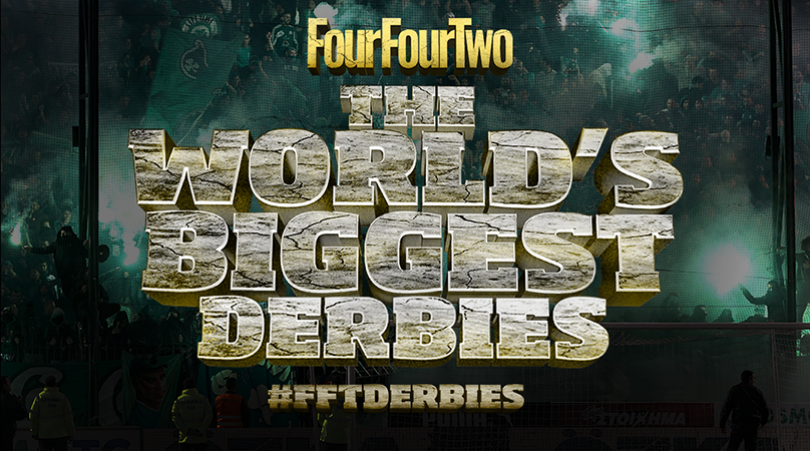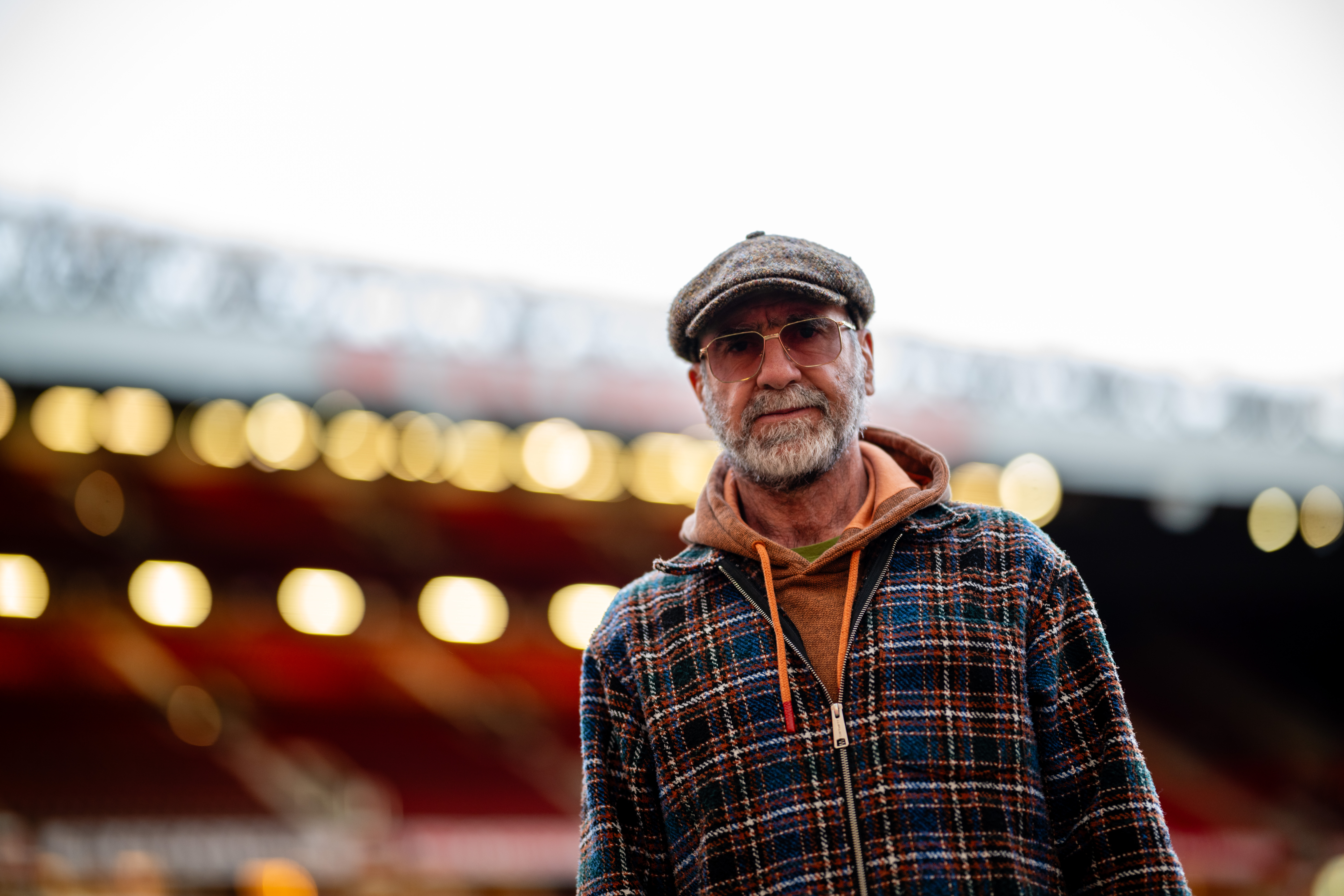Bad times in the Steel City: why Sheffield United vs Sheffield Wednesday is more than a game
In late 2011, the Blades met the Owls in the third tier for only the third time in the 121 years of the Sheffield derby. FourFourTwo's Neil Billingham was there to watch...
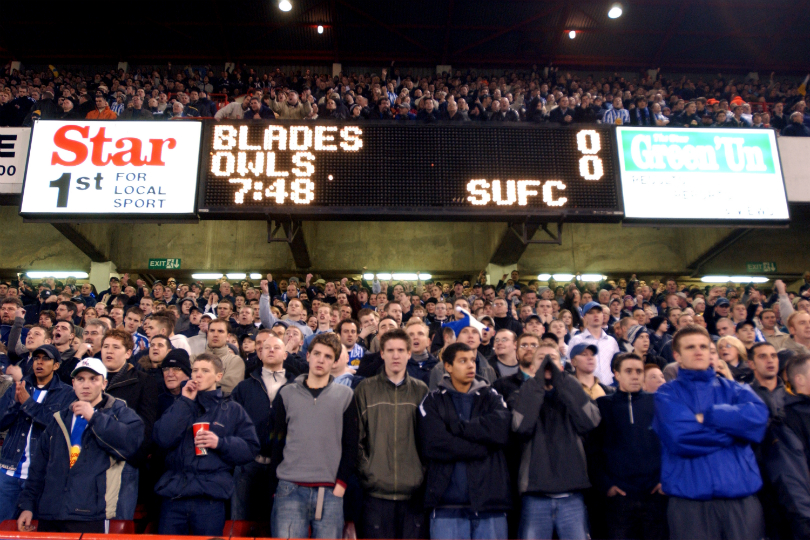
19 years is a long time in football. For fans of Sheffield United and Sheffield Wednesday it must feel like a lifetime. In 1992, English football was on the brink of a new era. The Premier League was launched amid much fanfare and hype. Both Sheffield clubs were guests at the top table.
The timing was perfect for Wednesday. The previous year, the Owls had earned promotion back to top flight and defeated Manchester United in the final of the League Cup – their first piece of silverware in over 50 years. The following term, they finished third in the league, and the next season saw four visits to Wembley in the League Cup final, FA Cup semi-final, final and replay. “We thought it would last forever”, says Roy Hattersley, former deputy Labour Party leader and lifelong Wednesday fan.
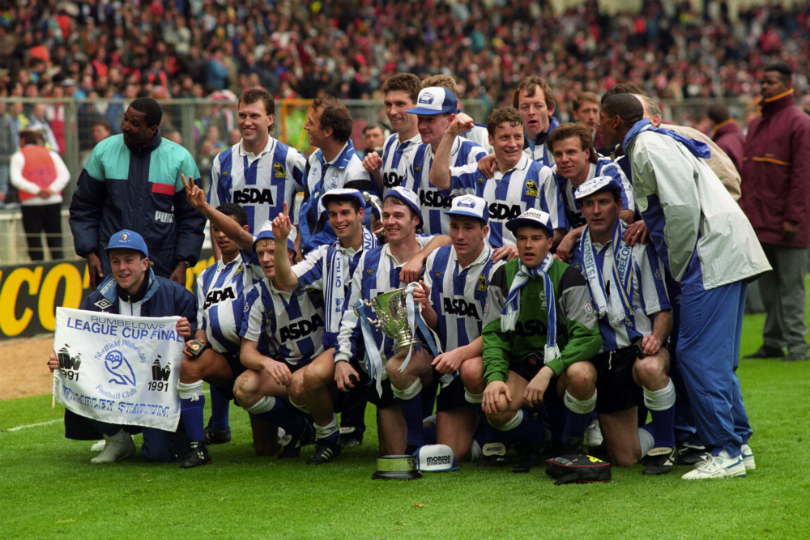
United weren’t doing too badly, either. In 1990 they returned to Division One after a 14-year exile, and three years later had their own trip to the Twin Towers by reaching the all-Sheffield FA Cup semi-final. “They were great times for the city,” says Hattersley. “But we’ve always dwelled on the past too much. Even when I went to my first match in 1944, the fans were harping on about the team that won the league in 1903 and 1904. You should never look back.”
But the present day is a far grimmer reality. Fast-forward to October 16, 2011 and the 126th Steel City derby sees both teams languishing in League One. How did it come to this?
The lost millions of Richards… and Tevez
He ostracised Paolo Di Canio and we sold him for around £2 million when he was worth £10 million.
In January 2009, Lee Strafford was appointed as chairman of Sheffield Wednesday. “When I took a close look at the accounts, I could see how badly the club had been run for 20 years,” he says. “Dave Richards has got a lot to answer for.” Richards, currently chairman of the Premier League, ran the Owls from 1990 to 2000. “He wasted millions overpaying for players,” believes Strafford. “His biggest error was when he ostracised Paolo Di Canio. We sold him for around £2 million when he was worth £10 million. Look at how Sir Alex Ferguson dealt with Eric Cantona’s indiscretion. He stood by Cantona and was richly rewarded.”
2003 saw Wednesday’s second relegation in four years as they dropped into the third tier for just the second time in their history. The Owls have hovered around there ever since.
Get FourFourTwo Newsletter
The best features, fun and footballing quizzes, straight to your inbox every week.
If you were to list three things a Championship side shouldn’t do, United did all three: too many managers, too many loan players, too much in wages for certain players
United have had an equally bumpy ride. The Blades were relegated from the Premier League in 1994 and, despite a revival under Neil Warnock that saw them reach the semi-finals of both domestic cups in 2003 and a return to the top flight three years later, United have toiled since then. Last season they were relegated to League One.
“A lot of people point to the Carlos Tevez affair as a turning point in the club’s recent history,” says James Shield, Blades reporter for Sheffield’s newspaper, The Star. When United were relegated on the final day of the 2006-07 season, the club appealed to the Premier League to be reinstated after West Ham (who finished 15th) were fined for fielding Tevez, who was partially owned by a third party. Warnock left as the saga dragged on for two years, ending with the Yorkshire club receiving £20m from the Hammers. “The affair overshadowed everything and left a sour taste,” says Shield.
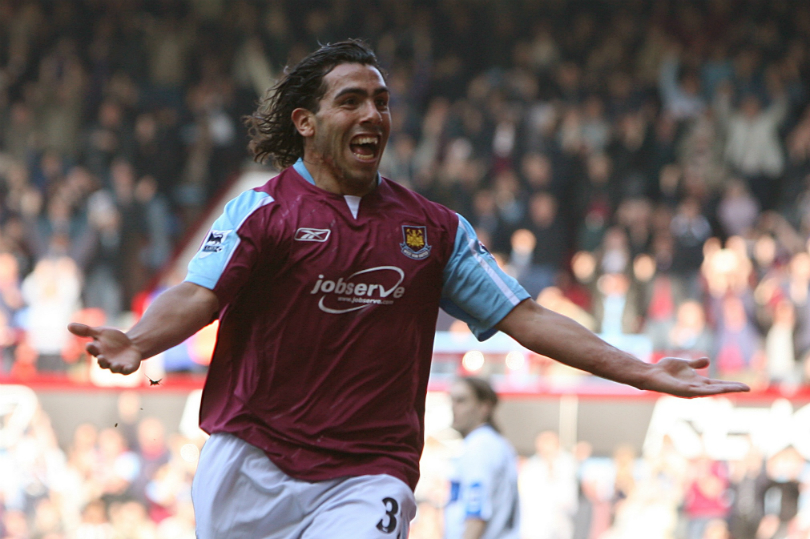
With the Tevez money, the club still looked set for a top-flight return – instead they struggled. Last season, the Blades hired four different managers in a futile attempt to stave off relegation. It was a textbook lesson in how not to run a club. “If you were to list three things a Championship side shouldn’t do,” says James Shield. “United did all three. They went through too many managers, all of whom had a completely different philosophy, so the players didn’t know if they were coming or going.
"Secondly, they were over-reliant on loan players. Kevin Blackwell often had to reshape the team because he had more loan players than he was allowed to use. Thirdly, they invested too heavily in the wages of certain players.” James Beattie was reputed to be earning £40,000-a-week when he joined United in 2007.
“Football is in Sheffield’s DNA”
The Lane was Wednesday's home from 1880 to 1887; two years later United moved in. It's the oldest major arena still hosting professional matches
The demise of both clubs has been hard to take for the city’s loyalists. Sheffield oozes with football history. Sheffield FC was formed in 1857 and is acknowledged by FIFA to be the world’s first club. The second was Hallam FC, also based here – and the first ever derby took place between the two in 1860. Two years later, the clubs played at Bramall Lane which also hosted the first ever football tournament, the Youdan Cup, in 1867.
The Lane became the home of Wednesday from 1880 to 1887, but two years later United moved in. The stadium is the oldest major arena on the planet still hosting professional matches. “Football is in our DNA,” says Richard Caborn, former Minister for Sport, MP for Sheffield Central and United fan. “Football was born here and the passion is no less than in Glasgow, Liverpool or Manchester.”
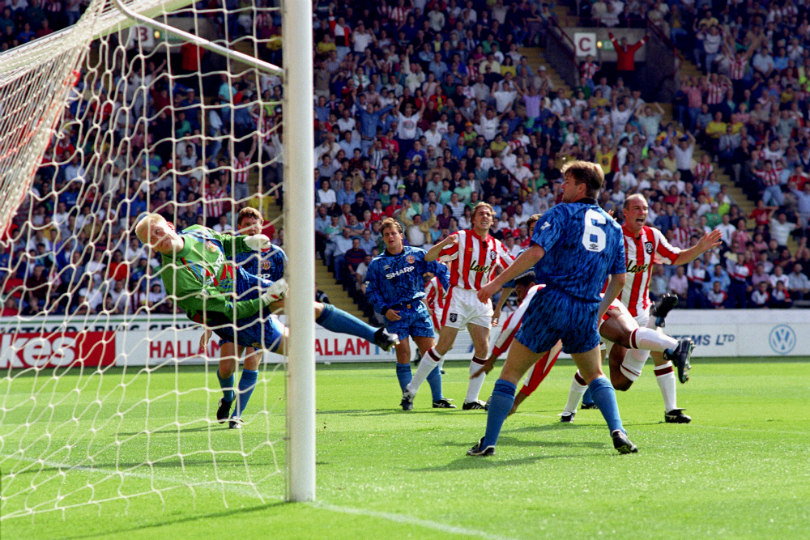
Sheffield’s demographic make-up also contributes to football being embedded into the city’s fabric. With a population of more than 600,000, it is described in many quarters as the most working class city in the UK. Despite a decline in the steel and coal industries, Sheffield still boasts a higher than average percentage of workers in the manufacturing sector. United can certainly claim to have the most working class of chants: The Greasy Chip Butty Song, sang to the tune of John Denver’s Annie’s Song, which glorifies of a night on the town with particular reference to beer, cigarettes and, of course, spud sarnies.
NEXT: "We shouldn't be playing second fiddle to towns like Blackburn"
The Steel City has also been dubbed ‘the biggest village in the UK’ due to its unique topography. To the west are the Peak District and the Pennines, to the east the Derbyshire Dales. Sheffield nestles in a bowl and is encircled by hills and greenbelt areas that only add to the seclusion.
Competing with Manchester United is very expensive. If a Sheffield club had played their cards right they could now have a 60,000-capacity stadium
Few conurbations can boast the same local pride and community identity and such loyalties stretch to the support for the clubs. “The city has changed over the years”, says Caborn. “The Universities have helped the city modernise, but Sheffield is still working class and both clubs have incredibly loyal supporters. It hasn’t changed much from when they were in the Premiership to being in League One.” This season both sides average gates above 17,000.
That said, isolationism hasn’t always been a force for the good. “For too long both clubs had local people in charge and on the board of directors,” says Lee Strafford. “They were very inward looking in their approach, and they’ve suffered as a result. Look at Manchester City. They tracked down investors from overseas, and it’s paid off handsomely. But competing with Manchester United is very expensive and if one of the Sheffield clubs had played their cards right they should now be the ones sitting pretty in the Premier League with a 60,000-capacity stadium.”
“We shouldn’t be playing second fiddle to towns like Blackburn”
Hillsborough needs updating, but it’s still a great stadium. Mandaric wants to make money, but he will only do that if the team has success
For all the regrets, it is surprisingly difficult to come across anything but optimism when questions about the future of both teams arise. “For the first time in 20 years we are free of debt,” says David Coupe, chairman of the Sheffield Wednesday Shareholders Association, who sold his shares to Milan Mandaric when the investor bought the club for £8m last November.
The former owner of Portsmouth and Leicester also struck a deal with Wednesday’s creditors, including the Co-operative Bank and former chairman Dave Allen, to wipe out the club’s £30m debts. “Hillsborough needs updating, but it’s still a great stadium,” says Coupe. “We’ve got great fans and young players coming through like Gary Madine. Sure, Mandaric wants to make money, but he will only do that if the team has success. He’s given us a new lease of life and there’s no way a club like ours should be playing second fiddle to towns like Blackburn and Bolton.”
Despite last season’s annus horribilis, there are still plenty of positive vibes emanating from Bramall Lane, too. “When I arrived there was an air of gloom, understandably given that lots of people at the club had lost their jobs as a result of relegation,” says United boss and former Owls midfielder Danny Wilson, who also had a spell as manager of Wednesday from 1998 to 2000. “We’ve had to cut costs and the fans needed to be won round because of my Wednesday connections. But we’ve rebuilt confidence, the team is winning games and playing good football, and we’ve got some great young lads coming through the academy.”
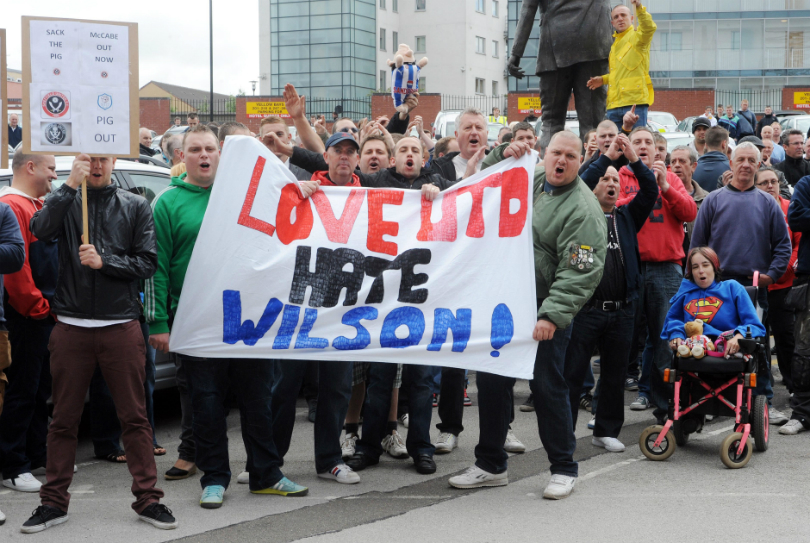
Last season the Blades’ youngsters reached the final of the FA Youth Cup, losing to Manchester United. Players like Harry Maguire, Matthew Harriott and Terry Kennedy have already made first team debuts. “We’re trying to be realistic,” says Wilson. “But there is optimism. I never experienced a Sheffield derby when I was Wednesday manager, but I’m sure it will be an absolutely banging atmosphere on Sunday.”
“I won’t drink with them, I won’t talk with them…”
Derbies at Bramall Lane are particularly nasty. I’ve got young kids and I wouldn’t take them near the place
For all the talk of civic pride, when it comes to derby day, some things never change: you’re either a Blade or an Owl. Recent derbies have witnessed violence inside and outside the ground and matches at Bramall Lane have proved difficult to police. “There aren’t many access points to Bramall Lane,” says Sup Int. Rachael Barber. “We’re deploying barriers on Sunday to keep the fans separated, but it gets very congested near to kick-off so we have to keep on our toes.”
Despite the 12pm start, the atmosphere still has an edge as the 3,000 Wednesday fans are shepherded into the away end. Predictably, abusive singing and threatening gestures are exchanged.
NEXT: "I’ve got three young kids and I wouldn’t take them near the place"
Five miles north at Hillsborough, 11,000 Owls are gathering to watch the match on a big screen. “Derbies at Bramall Lane are particularly nasty,” says Lee Strafford. “I’ve got three young kids and I wouldn’t take them near the place, so watching it at Hillsborough is perfect.”
But his team make a far-from-perfect start. The enormous roar from the Bramall Lane Kop inspires the home team and within 20 minutes, the red-and-white stripes take a 2-0 lead.

Victory would put them within two points of Wednesday, who started the weekend in second place in League One. As you’d expect from a South Yorkshire derby, the match is something of a throwback: the noise inside the stadium is rowdy and of the 22 players on show, only three were born outside the UK or Ireland. There are plenty of ‘no-nonsense’ tackles: midway through the second half, referee Michael Oliver has to dish out three yellow cards in nine minutes.
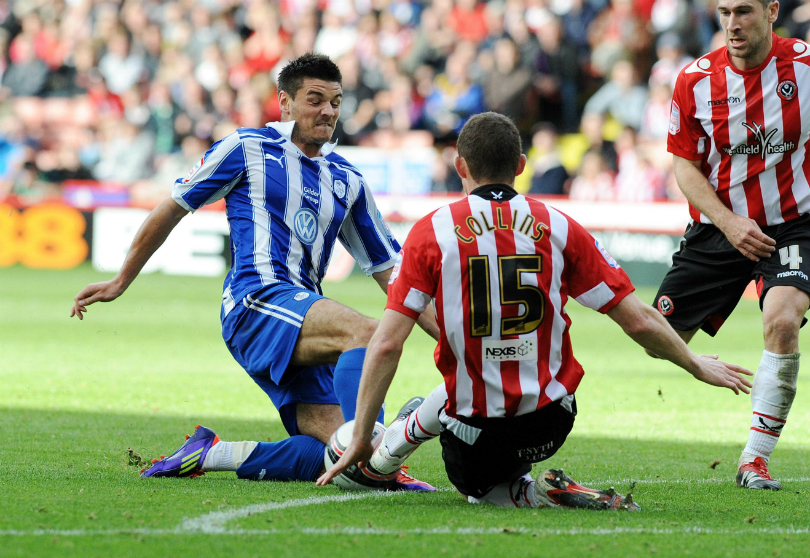
But hard-working Wednesday’s endeavour eventually pays off. With eight minutes left, they pull a goal back and equalise four minutes later to send the away supporters into raptures. The full-time whisle goes. It's ended 2-2.
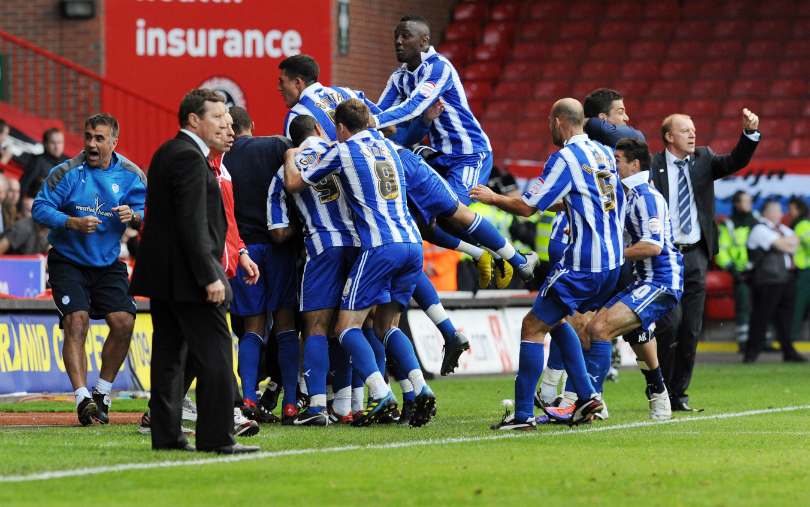
Both clubs look in good shape to earn promotion. So is there any chance of some post-match rapprochement between the fans? Not a bit of it.
“I’m a driving instructor,” says Wednesday nut David Coupe. “And the only people I won’t teach are United fans. I won’t drink with them, I won’t talk to them. And I’m one of the moderate fans. I sometimes wish my Dad never took me to Hillsborough. I’d have more friends and more money. But that’s what it’s like in Sheffield. Football is everything”.
United’s accounts are still in a mess, but hope springs eternal
Prejudice, pride and parochialism have characterised football in Sheffield for more than 150 years and that’s unlikely to change. Both clubs seem to have reached their lowest ebb in recent years and they now appear to be turning a corner.
Mandaric may have a patchy record when it comes to owning football clubs, but he’s wiped out Wednesday’s substantial debts and has the ambition to lead them back into the Premier League. United’s accounts are still in a mess, and for too long they have been reliant on the loans of owner and lifelong fan Kevin McCabe. But, with top-class youth system to supply the first team and generate funds from player sales, hope springs eternal.
The fans of both clubs may have been fed scraps over the past few years, but they are hungry for success and there are plenty of reasons to believe that their appetite for the big time will be sated. It shouldn’t be too long before the Steel City’s ‘big two’ are, once again, dining at the top of English football.
Footnote: The Boxing Day Massacre
With the kick-off moved to 11am, the Hillsborough turnstiles opened at the ungodly hour of 9.30 to welcome a crowd of 49,309, still a third-flight record
The most recent Steel City derby is seen as a sign of how far both clubs have fallen but the most infamous clash between the two also occurred in the third tier and is seen as Year Zero in the modern history of Sheffield’s footballing rivalry. December 26, 1979 is seen as the date when the balance of power shifted and the self-assurances and inner demons that both possess took root.
Newly-relegated United had enjoyed superiority during the ’70s and led the old Division Three table. Wednesday had already been in the third tier for three seasons but, as if stirred into life by their neighbours’ presence, lay fifth.
With the kick-off moved to 11am, the Hillsborough turnstiles opened at the ungodly hour of 9.30 to welcome a crowd of 49,309, still a third-flight record. With it being Boxing Day, there were no buses running and on a bleak, mid-winter’s morning, thousands trudged the streets to the game like rats following the Pied Piper.
United fans never forgave Terry Curran for his provocative celebration, even when he signed for them three years later
The game itself was typically frenetic, but less typically one-sided. Ian Mellor’s long-range rocket opened the scoring for Wednesday on 36 minutes and United disintegrated in the second half. Terry Curran scored with a diving header, triggering a provocative celebration in front of the United fans at the Leppings Lane end for which he was never forgiven, even when he signed for United three years later. Jeff King made it three and on 87 minutes United’s misery was complete when Mark Smith dispatched a penalty.
Named ‘the Boxing Day Massacre’ by Owls fans, the game was also a watershed. United spluttered alarmingly, ending the season in 12th place before suffering relegation to the Fourth Division the following season. Conversely, Wednesday’s win inspired a 16-match unbeaten run, resulting in promotion back to the Second Division and two decades of cross-city dominance. Thirty two years later, neither side have much brag about – but they’ll always have one of the country’s fiercest derbies.
This feature originally appeared in the December 2011 issue of FourFourTwo magazine. Subscribe!
